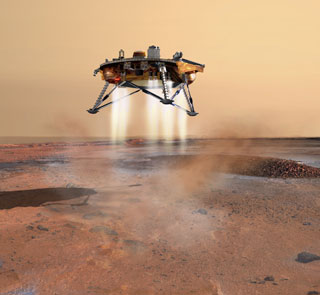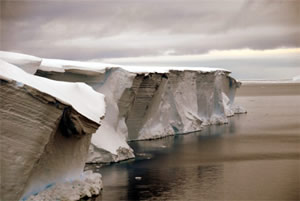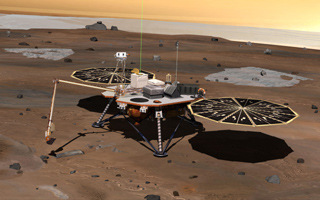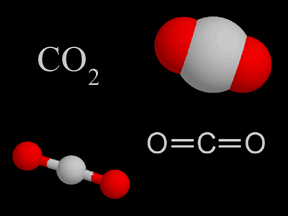Click on image for full size
Image courtesy of NASA/JPL-Calech/University of Arizona.
Related links:
Phoenix Instruments and Mission Objectives
Animation depicting Phoenix mission (small 3 Mb | large 31 Mb)
Phoenix Mars Lander
The Phoenix Mars Lander is a spacecraft that NASA has sent to Mars. Phoenix landed near the North Pole of Mars. Scientists think there is water ice just below the surface in that area. If there is water ice there, it might give us clues about the possibility of life on Mars. Phoenix is searching for water ice. If it finds any ice, it will use its instruments to analyze it.
Phoenix blasted off from Florida in August 2007. The spacecraft spent 9 months on its cruise flight to Mars. Phoenix landed on the northern plains of Mars on May 25, 2008. If all goes well, the lander will keep working for at least 90 sols (Martian days; about 92 Earth days). Phoenix uses solar panels to make electricity to keep it running. After about 90 days it will start to be winter at the Martian North Pole, so there will be less and less daylight. As it gets darker, the solar panels will stop making electricity and Phoenix will run out of power and will stop working.
Click here to learn about the instruments on Phoenix and also about the purpose of the lander's mission.
Phoenix landed at 233° East longitude by 68° North latitude on Mars. That's about as far north on the Red Planet as northern Alaska is on Earth. Although lack of sunlight will cause the robot to stop working after a few months, NASA hopes it will last a little while into the Martian winter. If it does, it may be able to watch ice build up on the land around it as winter begins. Dry ice, which is ice made from frozen carbon dioxide instead of water, will form around Phoenix. The lander may get buried in as much as one meter (3 feet) of dry ice!















